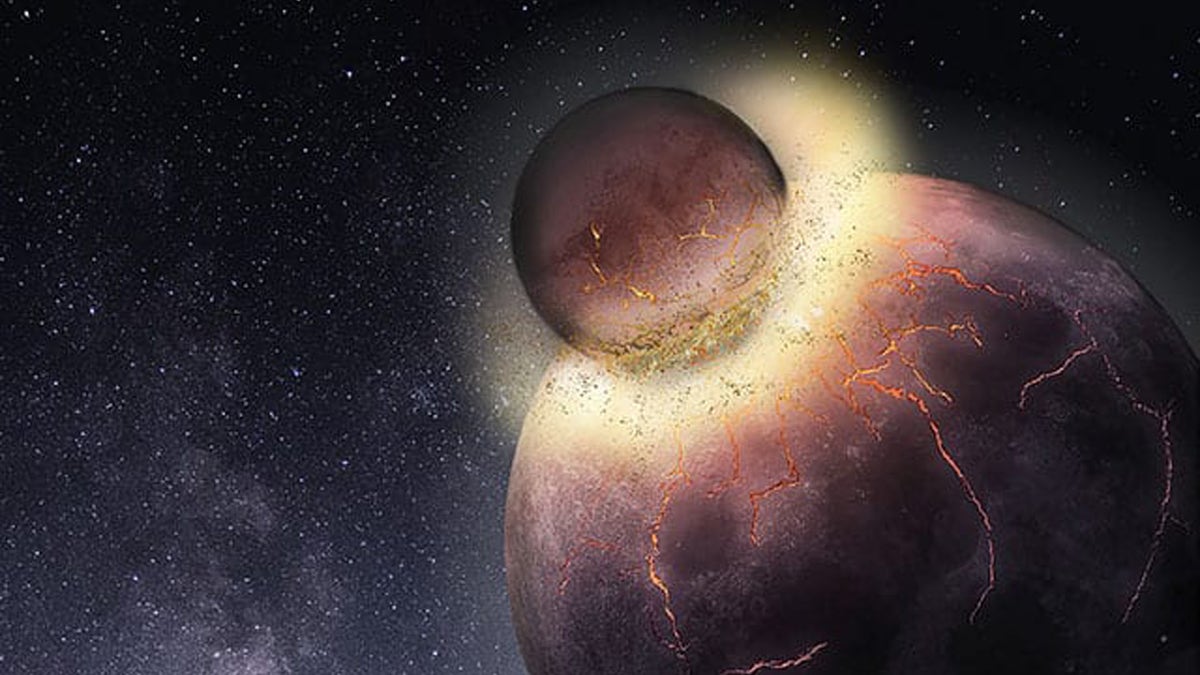
Rice University petrologists have found Earth most likely received the bulk of its carbon, nitrogen and other life-essential volatile elements from the planetary collision that created the moon more than 4.4 billion years ago. (Credit: Rice University)
Life as we know it is made up of six chemical elements — carbon, hydrogen, nitrogen, oxygen, phosphorus and sulfur. Without the presence of these, life as we know it ceases to exist.
But a new study published in Science Advances suggests that the building blocks for life on Earth came from a galactic collision with another Mars-sized object more than 4 billion years ago.
“What we found is that all the evidence – isotopic signatures, the carbon-nitrogen ratio and the overall amounts of carbon, nitrogen and sulfur in the bulk silicate Earth – are consistent with a moon-forming impact involving a volatile-bearing, Mars-sized planet with a sulfur-rich core,” study co-author Damanveer Grewal said in a statement.
ASTEROIDS HAVE BEEN CRUSHING EARTH FOR NEARLY 300 MILLION YEARS AND NO ONE KNOWS WHY
The hypothesized planet has often been referred to as Theia, including in a 2016 study from scientists at UCLA.
The study notes that the Earth's core does not have evidence of carbon, nitrogen and sulfur, leading scientists to believe that the elements arrive on Earth from an interstellar body. In the past, researchers have put forth the theory that life could have arrived on a series of meteorite strikes, but this new study suggests it was one, giant collision.
“The core doesn’t interact with the rest of Earth, but everything above it, the mantle, the crust, the hydrosphere and the atmosphere, are all connected,” Grewal added. “Material cycles between them.”
A separate study, published in October in The Astronomical Journal, detailed the implications of comet-like objects that may be "ferrying" microbial life across thousands of light-years.
In 2016, Rajdeep Dasgupta co-authored a similar paper, according to Gizmodo, but the new study looks at the three most essential elements — carbon, nitrogen and sulfur — and how they fared after the hypothesized impact.
"What we found is that all the evidence — isotopic signatures, the carbon-nitrogen ratio and the overall amounts of carbon, nitrogen and sulfur in the bulk silicate Earth — are consistent with a moon-forming impact involving a volatile-bearing, Mars-sized planet with a sulfur-rich core,” Grewal added in the statement.
Dasgupta said that rocky, Earth-like planets could potentially acquire life if it comes from giant impacts with other planets.
SECRET PENTAGON PROJECTS REVEAL GOV'T LOOKED INTO UFOS, WORMHOLES AND OTHER BIZARRE ANOMALIES
“This study suggests that a rocky, Earth-like planet gets more chances to acquire life-essential elements if it forms and grows from giant impacts with planets that have sampled different building blocks, perhaps from different parts of a protoplanetary disk,” Dasgupta said in the statement.
CLICK HERE TO GET THE FOX NEWS APP
Follow Chris Ciaccia on Twitter @Chris_Ciaccia




















